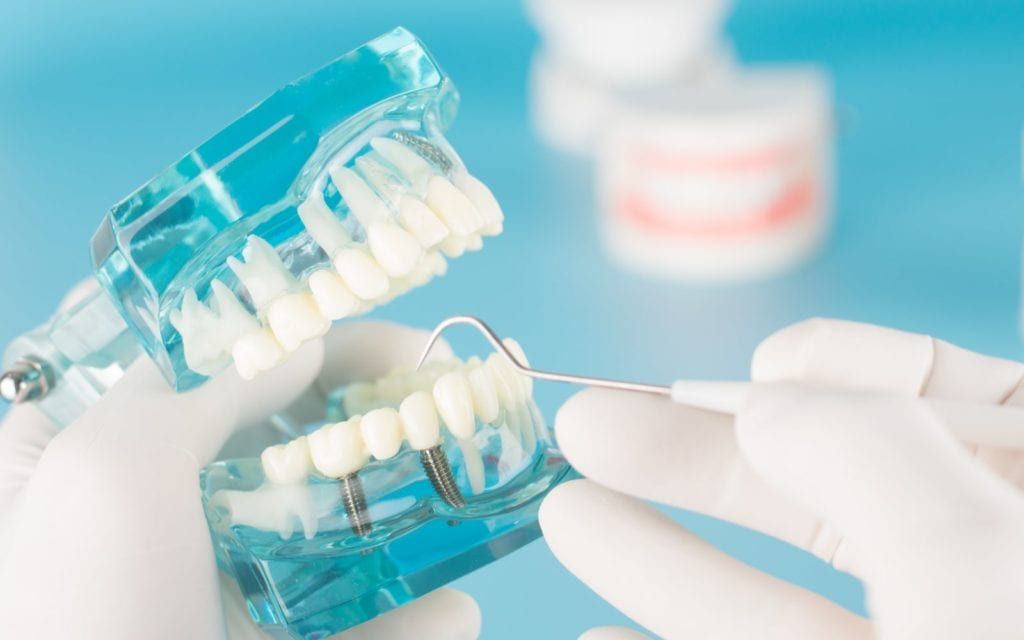Out of the wide selection of restorations, implants have provided the most stable, longest-lasting solution for patients. These tooth replacements give dentists a more in-depth ability to reconstruct mouths within safer measures and provide a tooth replacement that provides numerous long-term benefits, such as maintaining the jaw’s bone structure and keeping the mouth aligned. Dentists of all specialties often offer this restoration to replace missing teeth that have been previously affected by dental decay and gum disease. Implants, however, are always changing in design and construction to accommodate more patients.
For an endodontist, this means providing implants that not only solve issues for patients with missing teeth but also include providing more conservative options that maintain the structure and integrity of a damaged tooth. In response to this demand, endodontic implants can help provide patients with alternative solutions that protect their oral health and give them decay-free smiles.
The Difference Between Dental Implants vs. Endodontic Implants
Both of these implants have many differences that need to be noted when choosing a restoration. Both implant types function with the intention of restoring the mouth but have different modalities that determine where they’re appropriate for the needs of the patient. These implants both provide metallic screws and extensions to provide a base function, allow for crown placement, and ultimately work to restore a person’s mouth. But as newer innovations arising from popular demand, endodontic implants provide a variety of implants that accommodates patients with specific needs.
- Dental Implants: Regular implants remain the most popular variety offered by dentists, providing stable metallic screws to act as the base root for a crown replacement. These implant posts are placed inside the gum, typically in the apex or tip of the tooth’s root, and then would require osseointegration to heal. However, normal dental implants often require a strong jawbone that’s healthy to be placed, and for patients with TMJ disorder or osteoporosis in the jaw, the implant cannot be used due to the high risk of fractures and lack of absorption.
Most often, however, patients with these issues are offered other restorative options, including partial dentures and bridges to replace missing teeth. Bone grafts can be used to repair the jawbone over time, but often the success of the grafting procedure relies heavily on the patient’s healing process, which can take months to recover from before ever receiving the implant.
- Endodontic Implants: Endodontic implants provide a unique solution and work within specific circumstances to provide patients with conservative treatment. Developed back in the 1960s, endodontic implants use metallic extensions and are placed inside the apex of a loose tooth, and are surgically inserted into the jawbone to maintain the tooth’s integrity. Endodontic implants, unlike regular implants, work with teeth that are loose due to poor jaw health and root channels and work to restore the weakened support. These implants avoid the use of extractions and replacement and work to reverse bone loss in a more interactive manner.
With endodontic implants, it’s about saving the tooth’s natural structure and ratio within the mouth as a form of restoration. However, endodontic implants have come with some concerns from the dental community, as the application of this form of implant can often only be used in select cases where the tooth can be saved.
When Are Endodontic Implants Recommended For Patients?
There are some conditions that endodontists need to observe and treat before advising an endodontic implant, as any signs of infection, decay or deterioration can alter the success of the implant. Various conditions that could potentially impact the success rate of the endodontic implant include:
- Tooth Decay/ Cavities – Signs of cavities would need to be treated with either an inlay or onlay before receiving an endodontic implant.
- Gum Disease/Periodontal Disease – If a pulp infection is present from gum disease, then the pulp need to be treated to prepare for an endodontic implant, and these conditions would need to be addressed beforehand by a periodontist or primary dentist.
- Jawbone Deterioration – Severe jawbone deterioration may need to be addressed with bone grafts or sinus lifts to qualify for an endodontic implant procedure, as only mild to moderate bone deterioration can qualify for the endodontic implant.
- Missing Teeth – We recommend getting a regular dental implant, or another form of restoration is used to treat the condition, as endodontic implants only work for loose teeth with weakened integrity.
Do Endodontic Implants Truly Work?
Endodontic implants over the course of their development have had a rocky start, as enormous design changes in their construction had to be made to protect people’s dental health. Over the past 45 years, many clinical trials have tested endodontic implants, and due to their overall structure and design, they failed in integrating into the patient’s bone structure, causing a decline in popularity. However, recent clinical trials have assessed that endodontic implants under certain circumstances are successful. For these cases, bio-compatible materials are used to aid in the osseointegration process and require a highly skilled endodontic technique to properly insert the implant post into the tooth’s apex.
Even while endodontic implants have a small, narrow window of success, the overall success of the implant highly depends on the endodontist’s expertise and technique, alongside the materials they use to improve the osseointegration process. Conservative treatment for loose and missing teeth is still currently being explored, and as our technology improves, so does our opportunities to provide patients with more affordable options. The best place to learn more about endodontic implants is at your dentist, where they can describe to you how endodontic implants may or may not work for you depending on your condition, finances, and other areas of eligibility. For more information about endodontic implants, contacting your primary dentist or endodontist will provide you with the most information on whether endodontic implants will work for you.



